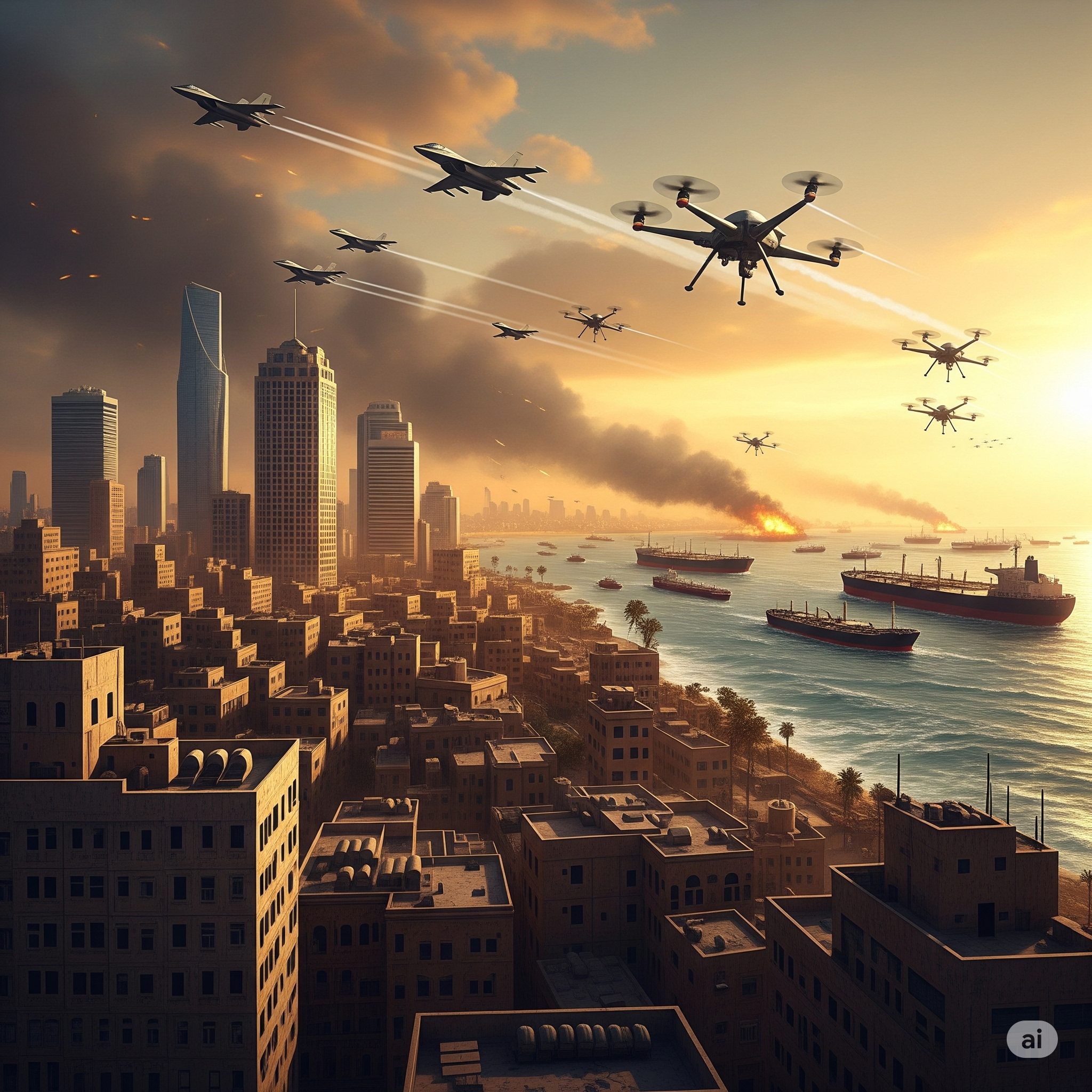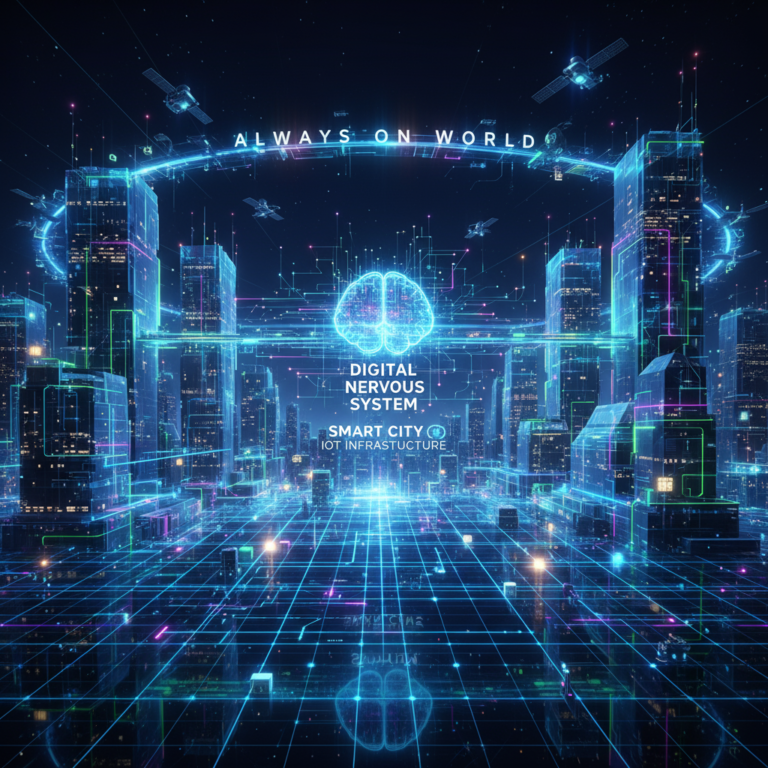Quick Summary:
- Conflict Drivers: Ideological hostility, nuclear ambition, proxy warfare, and cyber confrontation.
- U.S. Role: Strategic ambiguity, military presence, sanctions, and defense technology transfers.
- Gulf States Impact: Security dilemmas, oil infrastructure vulnerability, normalization with Israel, and high-stakes diplomacy.
- Technology Trends: AI warfare, drones, cyber operations, missile defense, and nuclear latency.
- Future Outlook: High-tech cold war with potential for accidental escalation unless diplomatic breakthroughs emerge.
A Region on the Brink
The Israel-Iran conflict is not merely a bilateral enmity; it is a fulcrum around which much of the Middle East’s geopolitical tension revolves. At its core, this confrontation is ideological, strategic, and increasingly technological. As the United States continues to play a significant role—both overtly and covertly—the conflict spills over into the Gulf region, affecting the stability, diplomacy, and energy security of major players like Saudi Arabia, the UAE, Qatar, and Oman. This essay provides a deep-dive analysis of the conflict, exploring its roots, current escalations, the U.S. footprint, and its impact on Gulf countries through a technical and geopolitical lens.
1. Historical Background: Ideology, Security, and Regional Power
1.1 Genesis of the Conflict
The roots of the Israel-Iran conflict stretch back to the Islamic Revolution of 1979. Iran, under the Shah, had cordial ties with Israel. However, the revolution ushered in a theocratic regime that declared Israel a “Zionist entity” and an enemy of Islam. Since then, Iran has consistently backed militant groups such as Hezbollah in Lebanon and Hamas in Gaza as part of its “axis of resistance” strategy.
1.2 Strategic Rivalry
The conflict goes beyond religious or ideological rhetoric. Iran seeks regional hegemony through what it terms its “forward defense” doctrine—expanding its influence via proxies and asymmetric warfare, especially around Israel’s borders. Israel, on the other hand, prioritizes its national security doctrine of “qualitative military edge” (QME), which ensures it stays technologically and militarily superior to any adversary in the region.
2. Technological and Asymmetric Warfare

2.1 Cyber Warfare and AI Capabilities
Israel and Iran are now engaged in a technologically sophisticated conflict. Cyberattacks such as the Stuxnet virus—which was reportedly a joint U.S.-Israel operation that crippled Iranian nuclear centrifuges in 2010—marked a turning point. In return, Iran’s cyber units have targeted Israeli infrastructure, including water systems and financial institutions.
In 2023–2024, Israel launched AI-integrated military reconnaissance drones capable of autonomous surveillance over Iranian and Syrian airspace, while Iran’s Shahid-series drones, known for their low cost and long range, were exported to proxy forces and used in attacks against Israeli allies and maritime assets.
2.2 The Proxy Battlefield
Lebanon, Syria, Iraq, and Yemen have become battlegrounds where Iranian proxies (like Hezbollah, Kata’ib Hezbollah, Houthis) confront Israeli or Israeli-aligned interests. This asymmetric conflict has turned these nations into geopolitical pawns, often destabilizing already fragile political systems.
3. The U.S. Factor: Balancing Deterrence and Diplomacy
3.1 Military Presence and Strategic Calculations
The U.S. maintains significant military assets across the Gulf, with bases in Qatar (Al Udeid), Bahrain (Fifth Fleet), and Kuwait. This presence is central to deterring Iranian aggression and ensuring the security of global energy supply lines, particularly the Strait of Hormuz—a chokepoint through which over 20% of global oil passes daily.
However, the U.S. is increasingly cautious about direct confrontation. Instead, it has resorted to a “strategic ambiguity” policy—providing arms and intelligence to Israel while engaging in indirect diplomacy with Iran, especially during the Iran Nuclear Deal (JCPOA) negotiations.
3.2 Economic Sanctions and Technology Denial Regimes
The U.S. has imposed waves of economic sanctions on Iran, targeting its oil exports, central bank, and advanced technology imports. In parallel, the U.S. ensures Israel’s access to advanced military technologies, including Iron Dome, Arrow 3, and David’s Sling missile systems—making Israel the most technologically armed state in the region.
4. Impact on the Gulf States: Strategic Tightrope Walking
4.1 Diplomatic Normalization and Security Dilemmas
The Abraham Accords of 2020—normalizing relations between Israel and UAE, Bahrain, and later Sudan and Morocco—have reshaped Gulf geopolitics. While these nations seek Israeli technology and U.S. security guarantees, they remain wary of provoking Iran.
Saudi Arabia, although not an official signatory, is in quiet coordination with Israel on intelligence sharing, especially concerning Iranian UAVs and ballistic missiles. However, Riyadh walks a fine line, balancing its security cooperation with Israel and the U.S. against its need to avoid open confrontation with Tehran, especially given recent efforts at rapprochement brokered by China.
4.2 Oil Security and Maritime Risks
Iran has repeatedly threatened to close the Strait of Hormuz in response to Israeli or American provocations. The Gulf states, dependent on uninterrupted oil exports, are directly vulnerable to such actions. Attacks on tankers—such as the 2019 incidents in the Gulf of Oman—highlight the constant threat to energy security.
In response, Gulf Cooperation Council (GCC) members have increased investments in anti-drone systems, maritime surveillance, and early-warning radar technology, often sourced from Israeli or Western manufacturers.
5. Broader Regional Repercussions
5.1 Nuclear Proliferation Risks
Iran’s nuclear ambitions—combined with Israeli threats of preemptive strikes—create a volatile environment with high risk of miscalculation. If Iran were to cross the uranium enrichment threshold required for weaponization, it may trigger a regional arms race, prompting Saudi Arabia and possibly Turkey to pursue nuclear deterrence options.
5.2 Regional Realignment and Tech Diplomacy
A new axis is emerging: Israel-U.S.-Gulf vs. Iran-China-Russia. While not formally declared, these alignments are influencing military deals, digital infrastructure investments (like 5G), and dual-use AI technologies. For instance, Chinese AI surveillance systems are being adopted by Iran and parts of Iraq, while Israel is exporting AI-assisted defense technologies to the UAE and Morocco.
6. The Road Ahead: De-escalation or Strategic Stalemate?
Despite numerous flashpoints—such as Israel’s covert operations inside Iran, Iran’s attack on U.S. bases in Iraq, and tit-for-tat drone strikes—both sides have so far avoided full-scale war. This suggests a “conflict management” model is in play rather than outright conflict resolution.
However, the stakes are rising with every technological leap. Hypersonic missiles, satellite-based ISR (Intelligence, Surveillance, and Reconnaissance), and AI-assisted autonomous weapons systems are reducing response time and increasing the possibility of accidental escalation.
Conclusion: A Fragile Equilibrium in a Shifting Landscape
The Israel-Iran conflict is not isolated—it is a regional ecosystem of strategic competition, proxy wars, and technological one-upmanship. The U.S. remains deeply embedded in this matrix, both as a stabilizer and an occasional accelerant.
Gulf nations, while seeking modernization and economic diversification, cannot ignore the persistent volatility that this conflict injects into the region. Their challenge lies in strategically hedging—benefiting from Israeli and American technological-military partnerships while maintaining economic and diplomatic channels with Iran.
Whether the future holds de-escalation, normalization, or open confrontation depends on multiple moving pieces. But one thing is certain: the Israel-Iran conflict, with U.S. involvement and its Gulf-wide impact, will continue to define the security architecture of the Middle East in the decades ahead.









+ There are no comments
Add yours